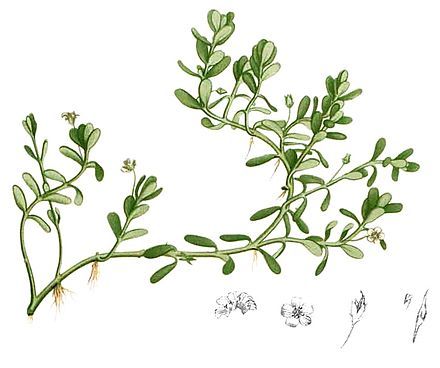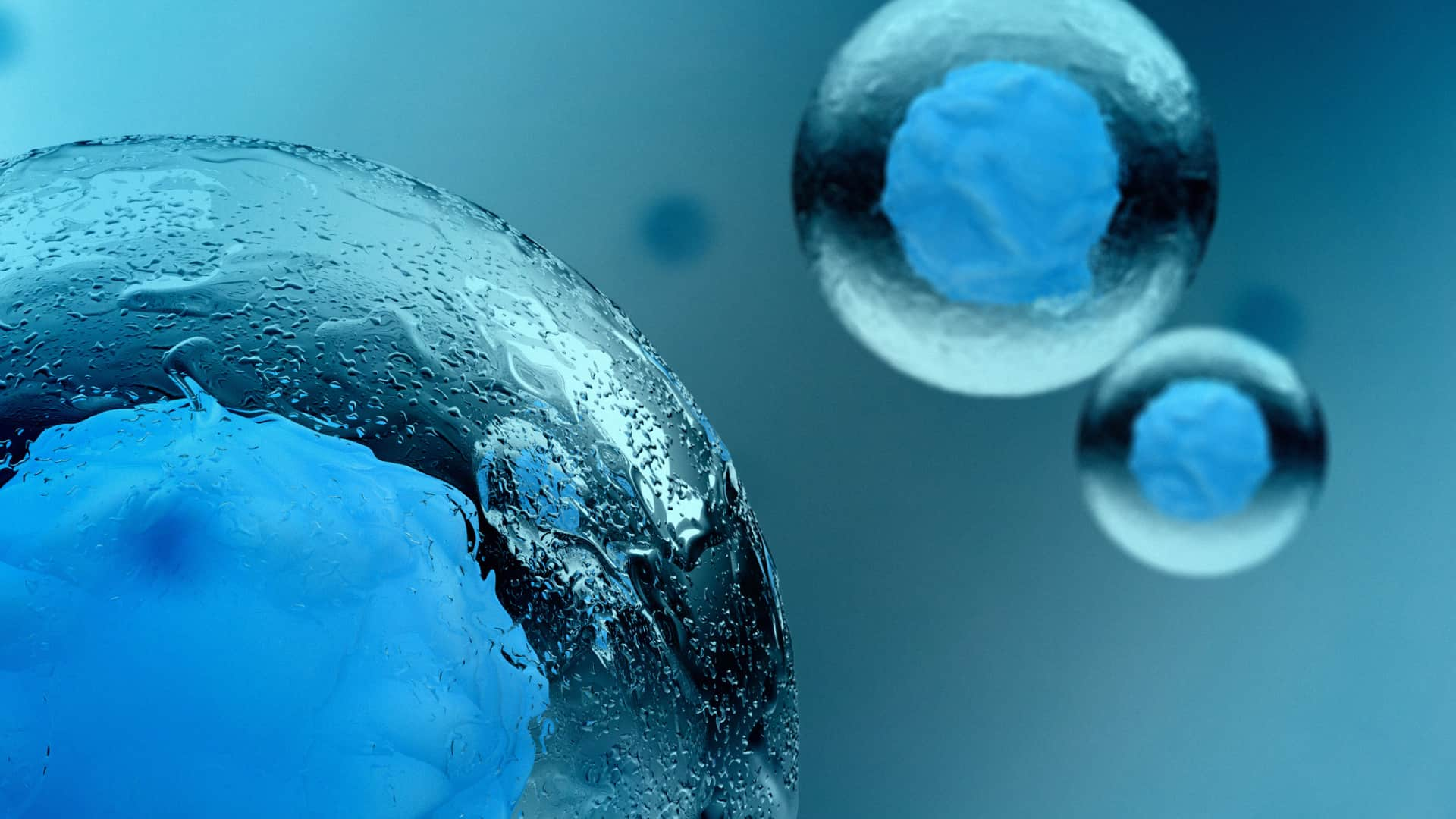Bacopa monnieri Extract

COMMON NAME
Bacopa | Brahmi | Water Hyssop
TOP BENEFITS OF BACOPA MONNIERI
Supports brain function and cognitive performance *
Supports a calm mood *
Supports healthy stress responses *
Supports antioxidant defenses *
WHAT IS BACOPA MONNIERI?
Bacopa monnieri has been used in Ayurvedic medicine for almost 3000 years. One of its main traditional uses has been as a neural tonic to support intelligence, cognitive performance, nervous system rejuvenation, and brain function. These traditional uses have made it a favorite nootropic herb. Scientific studies on B. monnieri have focused primarily on cognitive function and mood. B. monnieri has also shown adaptogenic properties, supporting the brain and nervous system during stress. B. monnieri contains saponins called bacosides. These compounds, most notably bacosides A and B, are believed to underlie the plant’s nootropic reputation [1,2]. B. monnieri also has strong antioxidant properties that may contribute to neuroprotective functions in the brain.*
NEUROHACKER’S BACOPA MONNIERI SOURCING
Bacopa monnieri Extract is made from plants harvested in India and uses a 10:1 herb to extract ratio.
Bacopa monnieri Extract is standardized to contain 20% bacosides (this is the sum of bacosides such as bacopaside I, bacoside A3, bacopaside II, jujubogenin isomer of bacopasaponin C and bacopasaponin C).
Bacopa monnieri Extract is NON-GMO and vegan.
BACOPA MONNIERI FORMULATING PRINCIPLES AND RATIONALE
Clinical studies using standardized Bacopa monnieri extracts typically use between 250-640 mg of these concentrated extracts. These amounts have been equivalent to 3000 to 9000 mg of the dried herb. We consider B. monnieri to be in the adaptogenic herb category, following hormetic dosing principles (see Neurohacker Dosing Principles) with a high likelihood of having a hormetic range (i.e., a dosing range below and above which results could be poorer). We have selected a serving that is consistent with the studied amount in the human clinical studies for supporting cognitive function and mood.*
BACOPA MONNIERI KEY MECHANISMS
Supports brain function and cognition*
Supports learning and memory* [3–8]
Supports attention* [9]
Supports working memory* [10]
Supports executive function* [6,11]
Supports alertness* [11]
Supports cognitive health* [12–14]
Supports acetylcholine signaling* [12,15]
Influences acetylcholinesterase activity* [15–17]
Supports dopamine signaling* [18,19]
Supports serotonin signaling* [12,18,19]
Supports GABA signaling* [20–22]
Supports dendritic growth and branching* [23,24]
Supports neuroprotective functions* [16,25–33]
Supports healthy brain cytokine signaling* [34]
Supports neuronal antioxidant defenses and counters oxidative stress* [16,25–27,32,33,35]
Supports neuronal mitochondrial function* [32,33,36]
Supports healthy cerebral blood flow* [37]
Supports a healthy mood and stress response*
Supports a calm mood* [6,11]
Supports healthy stress responses and stress hormone levels* [19,38–40]
Regulates stress-induced changes in dopamine and serotonin levels* [19]
Supports positive affect* [7,41,42]*These statements have not been evaluated by the Food and Drug Administration. This product is not intended to diagnose, treat, cure, or prevent any disease.
REFERENCES
[1]C. Sivaramakrishna, C.V. Rao, G. Trimurtulu, M. Vanisree, G.V. Subbaraju, Phytochemistry 66 (2005) 2719–2728.
[2]N.P. Sukumaran, A. Amalraj, S. Gopi, Complement. Ther. Med. 44 (2019) 68–82.
[3]M.P. Pase, J. Kean, J. Sarris, C. Neale, A.B. Scholey, C. Stough, J. Altern. Complement. Med. 18 (2012) 647–652.
[4]C. Neale, D. Camfield, J. Reay, C. Stough, A. Scholey, Br. J. Clin. Pharmacol. 75 (2013) 728–737.
[5]A. Morgan, J. Stevens, J. Altern. Complement. Med. 16 (2010) 753–759.
[6]C. Calabrese, W.L. Gregory, M. Leo, D. Kraemer, K. Bone, B. Oken, J. Altern. Complement. Med. 14 (2008) 707–713.
[7]C. Stough, J. Lloyd, J. Clarke, L.A. Downey, C.W. Hutchison, T. Rodgers, P.J. Nathan, Psychopharmacology 156 (2001) 481–484.
[8]S. Raghav, H. Singh, P.K. Dalal, J.S. Srivastava, O.P. Asthana, Indian J. Psychiatry 48 (2006) 238–242.
[9]C. Kongkeaw, P. Dilokthornsakul, P. Thanarangsarit, N. Limpeanchob, C. Norman Scholfield, J. Ethnopharmacol. 151 (2014) 528–535.
[10]C. Stough, L.A. Downey, J. Lloyd, B. Silber, S. Redman, C. Hutchison, K. Wesnes, P.J. Nathan, Phytother. Res. 22 (2008) 1629–1634.
[11]S. Benson, L.A. Downey, C. Stough, M. Wetherell, A. Zangara, A. Scholey, Phytother. Res. 28 (2014) 551–559.
[12]K.E. Rajan, H.K. Singh, A. Parkavi, P.D. Charles, Neurochem. Res. 36 (2011) 2136–2144.
[13]M.K. Saraf, S. Prabhakar, K.L. Khanduja, A. Anand, Evid. Based. Complement. Alternat. Med. 2011 (2011) 236186.
[14]S. Prabhakar, M.K. Saraf, P. Pandhi, A. Anand, Psychopharmacology 200 (2008) 27–37.
[15]S. Aguiar, T. Borowski, Rejuvenation Res. 16 (2013) 313–326.
[16]G.K. Shinomol, R.B. Mythri, M.M. Srinivas Bharath, Muralidhara, Cell. Mol. Neurobiol. 32 (2012) 455–465.
[17]A. Das, G. Shanker, C. Nath, R. Pal, S. Singh, H. Singh, Pharmacol. Biochem. Behav. 73 (2002) 893–900.
[18]P.D. Charles, G. Ambigapathy, P. Geraldine, M.A. Akbarsha, K.E. Rajan, J. Ethnopharmacol. 134 (2011) 55–61.
[19]N. Sheikh, A. Ahmad, K.B. Siripurapu, V.K. Kuchibhotla, S. Singh, G. Palit, J. Ethnopharmacol. 111 (2007) 671–676.
[20]J. Mathew, G. Gangadharan, K.P. Kuruvilla, C.S. Paulose, Neurochem. Res. 36 (2011) 7–16.
[21]J. Mathew, S. Soman, J. Sadanandan, C.S. Paulose, J. Ethnopharmacol. 130 (2010) 255–261.
[22]J. Mathew, S. Balakrishnan, S. Antony, P.M. Abraham, C.S. Paulose, J. Biomed. Sci. 19 (2012) 25.
[23]V.R. Vollala, S. Upadhya, S. Nayak, Rom. J. Morphol. Embryol. 52 (2011) 879–886.
[24]V.R. Vollala, S. Upadhya, S. Nayak, Clinics 66 (2011) 663–671.
[25]S. Tripathi, A.A. Mahdi, M. Hasan, K. Mitra, F. Mahdi, Cell. Mol. Biol. 57 (2011) 3–15.
[26]T. Sumathi, C. Shobana, J. Christinal, C. Anusha, Cell. Mol. Neurobiol. 32 (2012) 979–987.
[27]A. Jyoti, D. Sharma, Neurotoxicology 27 (2006) 451–457.
[28]R. Hosamani, Muralidhara, Neurotoxicology 30 (2009) 977–985.
[29]N. Uabundit, J. Wattanathorn, S. Mucimapura, K. Ingkaninan, J. Ethnopharmacol. 127 (2010) 26–31.
[30]M. Dhanasekaran, B. Tharakan, L.A. Holcomb, A.R. Hitt, K.A. Young, B.V. Manyam, Phytother. Res. 21 (2007) 965–969.
[31]G.K. Shinomol, M.M.S. Bharath, Muralidhara, Neurotox. Res. 22 (2012) 102–114.
[32]R. Hosamani, G. Krishna, Muralidhara, Nutr. Neurosci. 19 (2016) 434–446.
[33]G.K. Shinomol, Muralidhara, Phytomedicine 18 (2011) 317–326.
[34]M. Rastogi, R.P. Ojha, B.P. Devi, A. Aggarwal, A. Agrawal, G.P. Dubey, Neurochem. Res. 37 (2012) 869–874.
[35]S.K. Bhattacharya, A. Bhattacharya, A. Kumar, S. Ghosal, Phytother. Res. 14 (2000) 174–179.
[36]S. Srivastav, M. Fatima, A.C. Mondal, Neurochem. Int. 121 (2018) 98–107.
[37]N. Kamkaew, C. Norman Scholfield, K. Ingkaninan, N. Taepavarapruk, K. Chootip, Phytother. Res. 27 (2013) 135–138.
[38]D. Rai, G. Bhatia, G. Palit, R. Pal, S. Singh, H.K. Singh, Pharmacol. Biochem. Behav. 75 (2003) 823–830.
[39]K. Anbarasi, G. Kathirvel, G. Vani, G. Jayaraman, C.S. Shyamala Devi, Neuroscience 138 (2006) 1127–1135.
[40]D.K. Chowdhuri, D. Parmar, P. Kakkar, R. Shukla, P.K. Seth, R.C. Srimal, Phytother. Res. 16 (2002) 639–645.
[41]M. Chatterjee, P. Verma, G. Palit, Indian J. Exp. Biol. 48 (2010) 306–313.
[42]L. Micheli, S. Spitoni, L. Di Cesare Mannelli, A.R. Bilia, C. Ghelardini, S. Pallanti, Phytother. Res. 34 (2020) 2331–2340.



